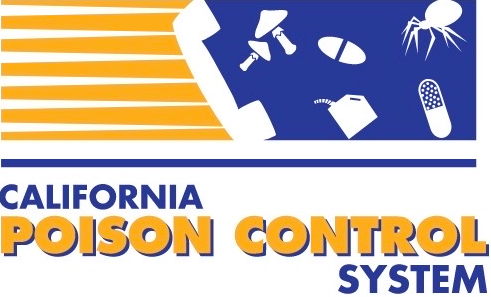By Alicia Minns, MD
Introduction
The use of antipsychotics began in the 1950’s after it was realized that chlorpromazine, an antihistamine, had a potent calming effect on mentation. The original antipsychotics such as chlorpromazine and fluphenazine revolutionized the treatment of psychiatric disorders. Prior to these medications, patients were mainly treated with sedatives such as barbiturates and housed in institutions for indefinite periods of time. Second-generation antipsychotics, or “atypical antipsychotics” were introduced in the late 1980s are now first-line therapy in the treatment of schizophrenia and are also being used for other conditions such as bipolar disorder, tic disorders and others. Atypical antipsychotics are advertised to have fewer extrapyramidal side effects such as dystonias compared to the original first-generation antipsychotics and are thought to be equally effective.
Case presentation
A 30-year old male presented to the Emergency Department with altered mental status. He was found by his family members with an empty bottle of quetiapine, which had been filled the day prior. On exam, his temperature was 100.3F; heart rate 120 beats per minute; blood pressure 100/55 mmHg; respiratory rate of 16 breaths per minute; and oxygen saturation 97% on 2L nasal cannula. He had mydriasis and a dry mouth. He was confused with mumbling speech and was picking at his oxygen tubing. An electrocardiogram demonstrated sinus tachycardia with a QRS duration of 102ms and a QTc duration of 498ms. A foley catheter was placed and 800cc of urine returned. He was given 2L of normal saline and was admitted to a monitored floor for observation.
Questions
- What is the etiology of the patient’s altered mental status?
- What are the typical ECG abnormalities seen with atypical antipsychotic overdose?
- Is there an antidote for this patient’s toxicity?
Epidemiology
Overdose of antipsychotic medications is common. Antipsychotics are within the top 5 groups of substances reported to national poison control centers. There are nearly 50,000 calls to U.S Poison Centers regarding atypical antipsychotic overdose. Most of these were managed at health care facilities. The majority of exposures were to atypical antipsychotics. When grouped with other sedating medications, these medications are associated with the largest numbers of fatalities reported to poison control centers.
Pathophysiology
Antipsychotics are usually classified as ‘‘typical’’ or ‘‘atypical.’’ They can also be classified by their chemical structure. The ‘‘typical’’ antipsychotics, also called first-generation, include the commonly used butyrophenones (droperidol, haloperidol) and phenothiazines (chlorpromazine, promethazine, prochlorperazine, fluphenazine, thioridazine). The ‘‘atypical,’’ or second-generation agents, are defined clinically as having minimal or no extrapyramidal symptoms at clinically appropriate doses. All antipsychotics block dopamine D2 receptors however the atypical antipsychotics bind less avidly to the D2 receptor, leading to fewer extrapyramidal effects. Atypical antipsychotics also antagonize serotonin receptors, mainly the 5HT2A receptor, mitigating the ‘‘negative’’ symptoms of schizophrenia such as avolition, anhedonia, and social withdrawal.
Both the typical and atypical antipsychotics have side effects that are related to the unique receptor-binding profiles of each agent. For example, a1-adrenergic blockade can cause orthostatic hypotension. Central and peripheral muscarinic receptor antagonism may result in sedation, sinus tachycardia, and urinary retention. The atypical antipsychotics have a decreased propensity to cause adverse motor side effects compared to the first-generation antipsychotics.
Clinical presentation
Antipsychotic overdose causes a variety of clinical manifestations, the most serious affecting the cardiovascular system and central nervous system. Sedation due to CNS histamine receptor blockade is commonly seen in overdose. The classic cardiovascular effects that occur after overdose include tachycardia, hypotension and QT prolongation on ECG.
One of the more serious clinical syndromes that can be seen with antipsychotic use and overdose is neuroleptic malignant syndrome. This is a potentially fatal, idiosyncratic reaction with an incidence of 0.01-0.02% and has been most commonly reported with haloperidol use. The incidence of NMS with atypical antipsychotics is not known. Antipsychotic-induced dopamine receptor blockade is thought to be the pivotal triggering role however the precise mechanisms in which NMS occurs is not well understood. NMS is characterized by hyperthermia, autonomic instability, neuromuscular rigidity and altered mental status. Elevated serum creatinine kinase as well as a leukocytosis are common laboratory abnormalities. This syndrome can be difficult to distinguish from the more common extrapyramidal side effects seen with antipsychotics.
Antimuscarinic delirium is one of the more common clinical scenarios seen in antipsychotic overdose and is due to central and peripheral muscarinic receptor antagonism. Clinical manifestations include hyperthermia, tachycardia, blurred vision, flushed dry skin, absent bowel sounds, urinary retention, agitation, hallucinations, lethargy, mumbling speech, and undressing behavior. Patients may be amnestic to the events.
ECG abnormalities have been reported for decades as well as sudden death, possibly due to torsades de pointes (TdP). QTc prolongation is most commonly reported and is dose related. There are also tremendous differences between specific agents in their propensity to cause QTc prolongation. Although QTc prolongation is common, TdP is rarely reported. QRS prolongation alone, resulting from sodium channel blockade, rarely occurs with these agents, but is most frequently associated with quetiapine.
Diagnosis
The diagnosis of antipsychotic overdose is based on a history of ingestion coupled with predictable symptoms and physical findings. Plasma concentrations of specific agents are not widely available and are not useful in the acute management of an overdose patient. Coingestion is common, therefore obtaining a serum acetaminophen concentration should be considered in all cases. There are numerous other common coingestants with routinely available serum levels such as ethanol, salicylate, lithium, and valproic acid often found in overdose patients with access to psychiatric medications; screening for these specific agents should be based on the history and physical examination. Routine urine drug-of-abuse screens do not detect antipsychotics and are not helpful in the acute management of an adult overdose patient.
Treatment
Treatment of atypical antipsychotic overdose is mainly supportive. Activated charcoal may be considered if administered within an hour of ingestion, as long as no contraindications exist, such as the presence of sedation or vomiting. Treatment of antimuscarinic effects is generally symptomatic. The most life-threatening issue with this toxicity is often the agitated behavior of the patient. Although these individuals are not usually violent as are those exhibiting sympathomimetic toxicity, they can hallucinate and may need physical or chemical restraint. Physostigmine, a carbamate-type cholinesterase inhibitor can also be used in the management of antimuscarinic delirium. Small doses of 1–2 mg administered intravenously can usually reverse the delirium, and patients often will not be as agitated after the pharmacologic effects of physostigmine wear off in 30–60 min.
If NMS is suspected, the most important aspect of treatment is withdrawal of the offending agent and particular attention to fluid and electrolyte balance. Aggressive external cooling may be indicated if hyperthermia is present. Sedation using benzodiazepines is recommended. At times, paralytic agents may be needed in severe cases. Oral dopamine agonists, such as bromocriptine and amantadine, may be utilized to reverse the dopamine blockade, but their use may be limited in critically ill patients.
Hypotension resulting from peripheral a1-blockade typically responds to intravenous fluids. If vasopressors are required, an agent with a-agonist activity, such as norepinephrine or phenylephrine, should be used. Seizures should be treated with benzodiazepines or barbiturates.
Most antipsychotic medications, including the atypicals, with the exception of paliperidone and possibly aripiprazole, are rapidly absorbed from the gastrointestinal tract, and symptoms should begin within 6 h of ingestion. Asymptomatic individuals at the end of a 6-h observation period (with the exception of the paliperadone and aripiprazole), can generally be medically cleared unless coingestants are involved or other medical conditions need to be considered.
Discussion of case questions
- What is the etiology of the patient’s altered mental status?
This patient’s altered mental status is due to antagonism of central muscarinic receptors. Some of the central effects include agitation, hallucinations, lethargy, mumbling speech, and repetitive picking behavior. - What are the typical ECG abnormalities seen with atypical antipsychotic overdose?
Sinus tachycardia is typical. QTc prolongation is most commonly reported and is dose related. QRS prolongation alone, resulting from sodium channel blockade, rarely occurs with these agents, but is most frequently associated with quetiapine. - Is there an antidote for this patient’s toxicity?
Physostigmine, a carbamate-type cholinesterase inhibitor may be used in the management of antimuscarinic delirium. Small doses can usually transiently reverse the delirium, and patients often will not be as agitated after the pharmacologic effects of physostigmine wear off in 30–60 min.



